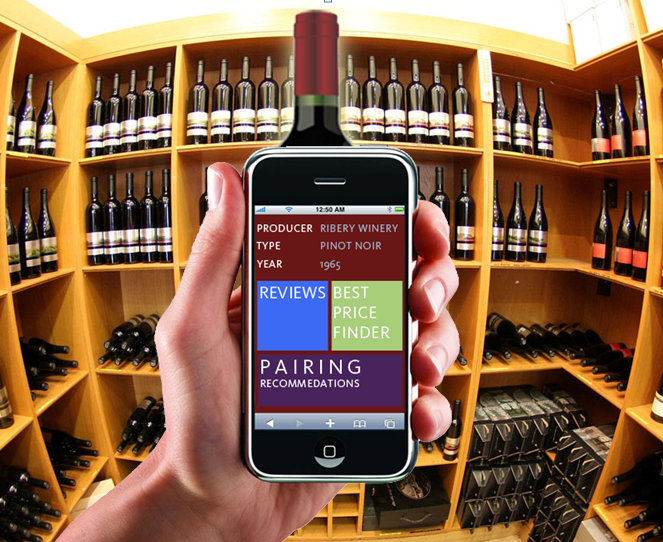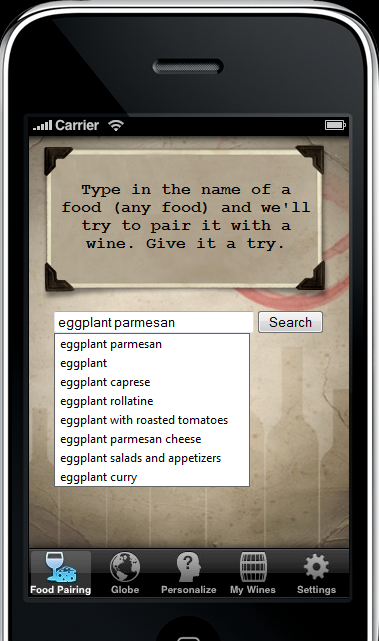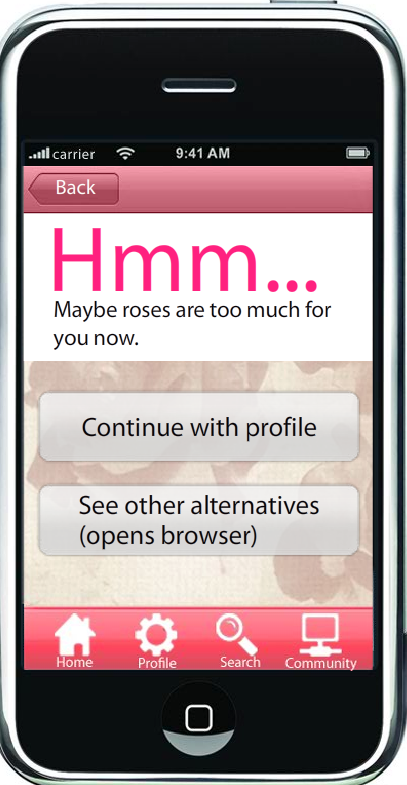Participants snapped, crackled, and popped at The eLearning Guild’s mLearnCon (Mobile Learning Conference) in San Diego in July, 2010. Most in attendance were wild for mobile learning, leaving no doubt that participants see it as the next big thing.
But what IS it?
As pronounced as the buzz around mobile learning was, there was another idea that grabbed just as much attention. That idea was mobile performance support. Mobile learning and mobile support are related, but they are not identical.
Learning invests in planned experiences that develop the smarts inside people. Performance support attends to outside influence and is what people turn to for help when stumped by a question, symptom, or decision. While the mind, heart, and belly are the domain of learning and instruction, performance support resides on mobile devices, our focus here, and also in pockets, on laptops, and even scribbled on palms and matchbook covers. Let’s look at a side-by-side comparison in Table 1.
|
|
Mobile Learning |
Mobile Performance Support |
|
When it happens |
As scheduled, during time set aside to learn, to develop skills and knowledge, while going about life and work. |
As needed, close to or simultaneous with the task or challenge. |
|
Where it happens |
When time is available, online via an e Learning module through scenarios, simulations, and drills. |
Where it is needed, on the manufacturing floor, in the call center, on a plane, and at the kitchen table. |
|
What it looks like |
An executive offers Podcasts about her view of the competition; scenario-based e-Learning presents realistic diagnostic scenarios on which doctors practice; drill and practice programs build fluent language skills. |
A text message reminds how to make the Thanksgiving turkey; a smart phone reads the barcode on a prescription and warns of a negative drug interaction; an iPad points to and instantiates required elements in the annual report; a checklist reminds what must be done to reduce infection rate. |
|
Why we do it |
To help them remember and perform unaided; to alter the smarts within our people; to develop them just in case they need it. |
To create external resources that can be referred to as they are needed, when they are needed. |
|
What users say |
I get it now. I remember. I feel better because I can handle it. |
I know where to find what I need to do that. I feel better because I can handle it. |
|
Who the users are |
Doctors, instructional designers, sales people, call center service providers…. |
Doctors, instructional designers, sales people, call center service providers…. |
Must we choose between instruction and support?
No. A system that combines instruction and support is most desirable of all – especially when much is expected of these people. Think about school principals. Or consider doctors and pilots. In 2007, in the New Yorker magazine, Atul Gawande described the power of checklists in medicine and commercial flight. Medicine and flight have grown increasingly complex. No one person can remember all that is required, no matter the length and quality of their training. To do all that they must do, they now turn to performance support, to a checklist. Gawande tells the story of Peter Provonost, a critical care physician. Provonost, concerned about line infections in the intensive care unit, innovated by providing a checklist job aid. It was stunningly successful, with dramatic reductions in the infection rate. Standardization, on-the-spot reminders, and an empowered role for the nurse made the difference.
Why an ode to performance support?
-
Performance support delivers valued assistance, given limits on human memory. If people could remember everything, then performance support would not be necessary. Memory can be categorized in two ways: long-term memory (LTM) and short-term memory (STM). Long-term memories are stored in the brain, whether they are recollections about chopping down Christmas trees with Grandpa, the political history of Malta versus Yalta, or the definition of “pusillanimous.” The movement of information from STM into LTM, into meaningful networks, is called learning. It costs time and money to learn. Short-term memory is limited, usually to five to seven pieces of information. A good illustration of the limits on STM is the process of transferring a credit-card number from a bill to the check that will pay the bill. Some people capture four numbers at a time; others can capture five, six, seven, or as many as eight numbers.
Because STM has limited capacity, and because moving data into LTM demands resources for repetitive practice over time and settings, professionals concerned with performance have turned to performance support, recognizing many opportunities for aided performance. Whether it’s the pressure of cooking the annual Thanksgiving turkey and assorted fixings, figuring out which products are most appropriate for this customer, or making a good decision about readiness to go to online graduate school, performance support serves as a trusted aid. Even Albert Einstein recognized his limitations and relied on performance support. He admitted to not knowing his own phone number because he could look it up, when necessary. It is hard not be affectionate towards a resource that delivers what you want, be it a phone number, turkey, or criteria for conforming to Sarbanes Oxley.
-
Performance support is short and sweet. No fuss, just focus. Peter Provonost did not write a checklist for the thousands of things that must be done in intensive care. He directed attention to where errors were made, were lives were lost, and hospital stays were lengthened. While effective instruction is comprehensive and prepares individuals to handle the unforeseen, performance support is targeted to the task at hand. Tony O’Driscoll, then with IBM and now at the University of North Carolina, said this about performance support: “Parsimony is the key. It is not about serving up everything that might be relevant to what you are trying to do today. It is about content and resources that solve the immediate now and the immediate how for the task that you are trying to get accomplished.”
-
Performance support is there when you need it, where you need it. Imagine that you are expected at a meeting across town. You have no clue how to get there. Fortunately, your colleague knows how. He whispers directions as he participates in a conference call. You then head for the meeting. Not surprisingly, half way across town, you can’t remember if you turn right or left after the main branch of the library. Don’t you wish you had purchased that GPS? With a GPS, a splendid mobile performance support tool, a sultry voice is in the car with you, to point you to your destination. The information and guidance are there when they are needed. In the car, with a client, on your couch, in the cockpit, or on the run, performance supports helps out. The GPS gets your context and informs you that you will be turning right in a quarter of a mile. Just before the turn, it is there to nudge you yet again.
Andrew Kupresanin recently invented Nadia, a camera with an aesthetics inference engine. Here I am at my niece’s wedding. She looks great. The Hudson River is gorgeous. Her hair is blowing in the wind. I want this photo to be perfect. Is it right? Is this a good photo? What if I took it from this angle instead? Nadia offers ratings as the photographer frames alternatives.
-
Performance support is all about your priorities. On a diet? Working in an intensive care unit? Worried about your readiness to cope with an earthquake? Or are you perhaps a boarding officer? Performance support earns your favor by targeting your concerns. U.S. Coast Guard officer Dan Hardin, a commercial fishing vessel safety coordinator, decided to use performance support to improve inspections on fishing vessels. Prior to the use of the performance support tool, boarding officers were required to attend a one-week course on the intricacies of enforcing hundreds of pages of federal regulations for fishing vessel safety. The complex laws applied to many boats and situations, and sometimes resulted in inconsistent or inaccurate choices by boarding officers. Hardin’s mobile support tool eliminated much of the memorization. The PDA generates a customized checklist of safety requirements for firefighting, lifesaving, and bridge equipment appropriate to each vessel. No more laboring to determine whether the law requires this particular ship to carry one of three different types of life rafts, an inflatable buoyant apparatus, life float, or nothing at all.
Technology makes a good thing even better
One of the great things about the humble print job aid is that it goes where it is needed. That’s true of mobile devices, too. For example, through software on a mobile device, that shopping list can do more than tickle your memory. On a mobile device, that list can deliver targeted advice about the quality of intended purchases, in light of selected goals. Does this purchase match daily caloric intentions? How about dietary restrictions? But wait, there’s more. RedLaser, an iPhone application, scans barcodes and, relying on location services, advises on where to find that product at a better price.
Experience what technology contributes to performance support in San Diego’s Balboa Park, using a 99 cent iPhone app. On 1,200 acres, with fourteen museums, a world famous zoo, theaters, gardens, and restaurants, the park is stunning. But it can overwhelm, and it is not unusual to find visitors wandering lost and frustrated. Imagine that you are a visitor with only four hours to spend at the park. How do you maximize your time? Where is the Japanese Friendship Garden and how far is it from your current location at Fleet Space Museum? How do you get to it? What other attractions are in close proximity? The kids are craving churros. Are those long, slender, deep-fried crullers available in Balboa Park? The app will help you find out. For just under a dollar, the mobile performance support is present, speedy, and personalized to you and your circumstances, something few learning experiences can be. (Read a little about the app at http://www.bpoc.org/node/6588, or download it from the App Store if you are planning a visit.)
Planner and Sidekick Performance Support
Performance support is a big idea. It helps to break it into two concepts focusing on how integrated the support is with the task or opportunity.
Performance support can be absolutely and totally integrated into the challenge, providing guidance in the flow of the activity. The GPS is a fine example of maximum integration. Another example of full integration occurred as I worked on this paper. Microsoft Word gave me immediate notice that it had doubts about the Mexican sweet, churros. The squiggly red line alerted me; I chose to ignore it because I know how good my memory is for food words. Let’s think about wine. A sidekick wine performance support tool would be with you in the store, as you behold your options. You scan bar codes, or perhaps rely on RFID. Then the system informs about taste, cost, awards and recognitions, and where to buy that bottle at a better price. (Figure 1) Such a sensitive sidekick is not yet available, but soon … very soon.

Figure 1: A sidekick performance support tool can give you on-the-spot summaries of your options.
Let’s continue with the wine theme as we look at the second form of performance support, planner support. Less integrated, but equally worthy, is my Wine Steward mobile performance support tool. Soon after I loaded the Wine Steward software on my phone, I responded to the questions it asked, such as how much I am willing to spend, what tastes I prefer, and where I live. Now, with a pressing need for the right wine to go with eggplant curry, it combines my answers with this main course to generate personalized recommendations. Wouldn’t you be grateful for that assistance? Isn’t it worth a couple of bucks? Or would you rather take a wine tasting class? Do you think you will remember stellar, local wine options appropriate for eggplant curry? Would you remember enough to select differently if you switched to serving eggplant parmesan? You might not recall, but the performance support tool does.
The Wine Steward performance support tool (Figure 2) is not fully integrated into the task. Nor should it be, because it is designed to encourage thoughtfulness while pondering options, just before I purchase.

Figure 2: Wine Steward is a planner-type performance support tool.
Planner performance support provides guidance and advice just prior to and also just after the challenge. It could be helpful in selecting the right wine, mulling over a performance review before submitting it, or judging how you could have delivered an even better speech to a skeptical audience.
A rose for mobile performance support
John Park, a learning specialist at Qualcomm, and I decided to use this thorny topic to test these ideas about mobile performance support.
Meet Holly. She works in sales at a nursery. Holly discovers that the company is about to run a sale on rose bushes. She knows she went to training about roses last year, but eleven months later, she doesn’t remember the details.
How can planner and sidekick support help Holly? In addition to basic sidekick support about kinds of roses, proper locations to plant roses, and ancillary products, she turns to a most amazing mobile sidekick to help her assist Debbie, a customer with a big problem. Holly could not identify a bug that Debbie captured in her garden and brought in. Holly had no clue what to suggest to Debbie. Her mobile sidekick recognized the bug and pointed to products that would encourage it to live somewhere other than her rose bushes.
Let’s imagine that Holly works for a forward-thinking company committed to enabling customers to make good decisions about roses for themselves, before they purchase them. Planner performance support helps Sue get beyond her rose infatuation to think hard and well about the subject. The video introduces the idea of mobile support for self-service, which concludes by directing Sue to consider other, less demanding, plants, given her responses regarding prior plant tending behaviors. (Figure 3)

Figure 3: This mobile support for self-service helps gardeners decide what kind of rose to buy.
In conclusion
IDC, an international research firm, predicted that by 2020 there will be 35-billion connected mobile devices, more than four times the world’s current population. Intrepid Learning recently published a white paper, “Mobile Learning: the time is now,” proclaiming their certainty about mobile learning. Mobile learning attracts most of the attention, especially in the developing world, where it makes sense to leapfrog PCs and jump to placing learning assets on the devices already present.
For the developed world, it’s mobile learning and mobile performance support. Mobile support will help us switch money from one account to another, pick wines, invest in green enterprises, monitor blood pressure, select employees and accounting packages, find parking spaces, make good use of an afternoon at Balboa Park, and support employees who have just suffered a grievous loss.
Is performance support appropriate for your task or challenge? It is suitable to answer that question by sending you to performance support for an answer. Once performance support is determined to make sense, ask yourself if it will be planner support. What of sidekick support? Both? What of instruction? You get to decide.
Resources
Gammon, S. K. (2010). M-learning is the future of education. Retrieved 19 July 2010. https://unmarkedconsulting.com/blog
Gawande, A. (December 10, 2007). The checklist. New Yorker. Retrieved 19 July 2010. http://www.newyorker.com/reporting/2007/12/10/071210fa_fact_gawande
Intrepid Learning Solutions (June 2010). Mobile learning: the time is now. Retrieved July 22, 2010. http://www.trainingindustry.com/media/3162224/intrepid%20mobilelearning%20thetimeisnow.pdf
MOTILL Project (Mobile Technologies in Lifelong Learning: best practices)
http://motill.eu/
New technologies, new pedagogies: Mobile learning in higher education
http://ro.uow.edu.au/newtech/
7 Things You Should Know About Mobile Apps for Learning
http://www.educause.edu/Resources/7ThingsYouShouldKnowAboutMobil/204763
Rossett, A. & Pettry, D. (March, 2010). The classroom in context: taking leader development beyond the classroom. Talent Management, 16-20. Retrieved July 26, 2010. http://www.nxtbook.com/nxtbooks/mediatec/tm0310/index.php?startid=16#/18
Rossett, A. & Schafer, L. (2007). Performance support for performance support http://www.colletandschafer.com/perfsupp/tool.html
Mobile Learning: Obstacles and Solutions http://www.learningsolutionsmag.com/articles/473
(This article expands on ideas in Allison Rossett & Lisa Schafer’s book, Job Aids and Performance Support in the Workplace: Moving from Knowledge in the Classroom to Knowledge Everywhere, San Francisco: Pfeiffer/Wiley Inc. (2007).



